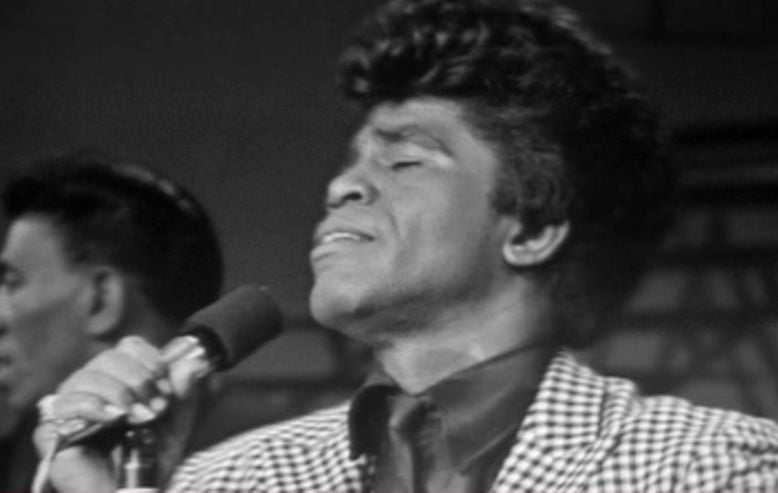This article is from our friends at Trunkworthy.
“Jazz will benefit from my involvement in it,” the typically not-so-modest JB said after cutting his big-band jam in 1969. After hearing Soul On Top, it’s hard to argue with the man.
James Brown! James Brown!! J*A*M*E*S B*R*O*W*N!!! We know him as “The Hardest Working Man in Show Business,” and from such groundbreaking hits as “Please, Please, Please,” “Cold Sweat,” and “Say It Loud – I’m Black and I’m Proud”—and now from the newly released biopic. But despite his popular image as a soul screamer and a funky grunter, there was a time in the ’60s when he was experimenting with his sound. Like his fellow American artist Walt Whitman, he contradicted himself, contained multitudes, and had no problem with any of that.
Some of J.B.’s biggest ’60s discs were mellow-dramatic ballads: ‘Try Me,” “Prisoner of Love,” and the string-drenched “It’s a Man’s Man’s Man’s World.” Brown also recorded fistfuls of jazzy instrumentals that showcased his gut-bucket organ stylings.
His relentless experimentation led to funk bomb “Mother Popcorn,” the tribute album Thinking About Little Willie John and a Few Other Nice Things, and a jazz-oriented LP with backing by the Dee Felice Trio all being recorded within months of each other. That last disc might be the oddest duck in the James Brown catalog, but Soul on Top is a close second—and far more Trunkworthy.
Recorded in Hollywood toward the end of 1969, Soul on Top features plush horn arrangements by ex-jazzman Oliver Nelson, played by a 19-piece group of L.A.’s top studio musicians—plus J.B.’s longtime tenor saxman Maceo Parker, who takes all the solos—led by veteran big-band drum powerhouse Louie Bellson (who’d pioneered using two bass drums at once).
The album opens with a mid-tempo take on “That’s My Desire” —a standard that’d been recorded by everyone from Frankie Laine to various ’50s vocal groups—with J.B. singing near the top of his range and sounding a bit like Dinah Washington, before devolving into a series of screams, intentional stutters, and repetition repetition. (The showtune “What Kind of Fool Am I?” finds JB starting at the bottom of his range so he can build to that dramatic, climactic note.) Another standard, “It’s Magic,” resurfaces as a lightly swinging ballad. A jaunty version of Motown’s faux-retro “For Once in My Life” and a finger-snappin’ “Every Day I Have the Blues” that recalls the Count Basie band complete the album’s more traditional tracks.
But then . . . Hank Williams’ “Your Cheatin’ Heart” gets turned into a boogaloo; Kurt Weil’s “September Song” becomes tambourine-driven, alternately conversational and declamatory soul; and “It’s a Man’s Man’s Man’s World” is reworked into a left-right combination of bodyshots from the horns while J.B. reverts to talk-singing rhyming couplets and screaming over an extended vamp. (This song and four others —including a rearrangement of “Papa’s Got a Brand New Bag” that culminates in J.B. trading screams with Maceo’s sax—were presented on CD in their original versions, which were trimmed for the LP.)
As the title implies, Soul on Top isn’t really a jazz album, mostly because James Brown can’t stop being J*A*M*E*S B*R*O*W*N. While this neither fish-nor-fowl quality kept it from crossing over to the intended supper-club market, it’s a fascinating document more than worth your time.
More From Trunkworthy:
 |
 |
 |
| James Hunter's Proto-Soul And The Worth Of The Cool | For 2 Completely Bonkers Minutes in 1965, Roy Head Snatched James Brown's Crown | When Tommy Ramone Returned Home... And Put His Band Back On Track |

